By Charles Burchill
I was asked to consider an article for Cross Post contrasting FreeStyle and Canadian Style canoeing. This got me thinking about my friends Daniel and Darryl, identical twins. I have known them for over twenty years, and although they still look the same, their lives have taken them along different paths – Daniel is quiet, married, has children, and is math-oriented; Darryl is outgoing, single, and has an artistic flair. This is how I see FreeStyle and Canadian Style – although starting off together, the river of life has cut a different path for each of them. I am intentionally avoiding the progenitors of style paddling, suffice to say many of the techniques have been used for generations (probably millennia) by anyone that felt the connection between water and craft. To keep this discussion manageable, I will also restrict myself to Solo paddling and leave the tandem discussion for an evening around the fire.
I was raised in the tradition of Canadian Style paddling, it is my blood [see: Style Canoeing; my story: https://freestylecanoeing.com/style-canoeing/]. My first introduction to FreeStyle (or Advanced Quietwater Technique) was at a workshop put on by Mark Molina and Doug Ingram. Since then others have chimed in with nuggets of wisdom, and I have watched and learned by trial and error. The techniques entranced me, and I started to include some of the skills, although modified, into my style of paddling – it just made sense and added a bit of fun.
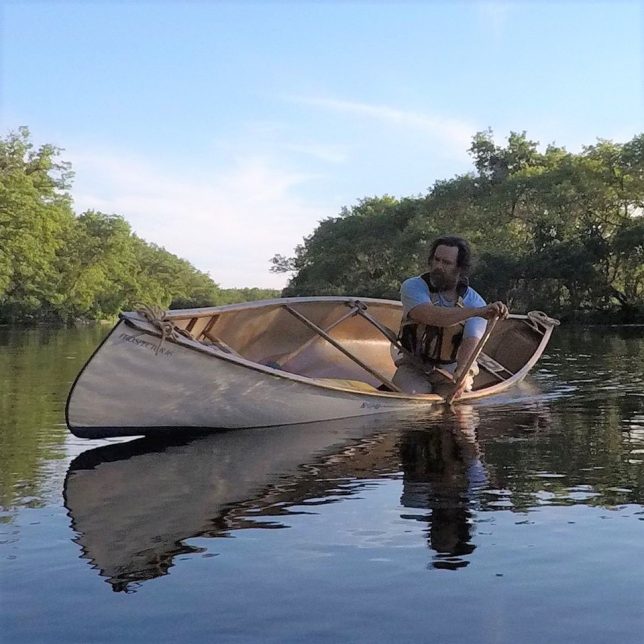 I developed, or more correctly re-developed, the ‘Style Paddling’ program for Paddle Canada in 2009. I included some components of FreeStyle in the program because I felt it was important, and provided an important array of skills and techniques. My Canadian peers questioned this addition – they felt I would muddy the purity of Canadian Style, but I persevered. I often get asked – what is the difference? I personally don’t see a clear distinction, but a continuum between skills. This sometimes gets me into some trouble with both my Canadian Style and FreeStyle peers who see each as a completely different discipline. In truth, both focus on smooth efficient flatwater paddling, with precision boat control. Both schools refer to their discipline as obedience training for canoes, or they will use the term Canoe Dance or Ballet; my preference is Canoe Dressage.
I developed, or more correctly re-developed, the ‘Style Paddling’ program for Paddle Canada in 2009. I included some components of FreeStyle in the program because I felt it was important, and provided an important array of skills and techniques. My Canadian peers questioned this addition – they felt I would muddy the purity of Canadian Style, but I persevered. I often get asked – what is the difference? I personally don’t see a clear distinction, but a continuum between skills. This sometimes gets me into some trouble with both my Canadian Style and FreeStyle peers who see each as a completely different discipline. In truth, both focus on smooth efficient flatwater paddling, with precision boat control. Both schools refer to their discipline as obedience training for canoes, or they will use the term Canoe Dance or Ballet; my preference is Canoe Dressage.
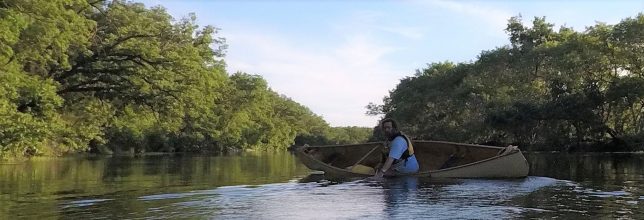
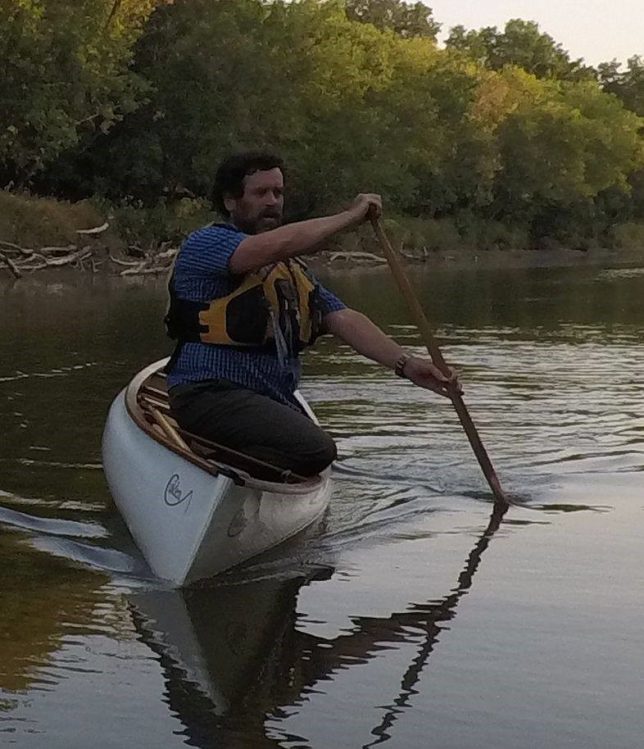 The rest of this article is based on my interpretation of the styles at each end of the continuum. My thoughts are not gospel, I am sure some of you will dispute my thoughts (rigorously), and even go so far to think of me as heretical.
The rest of this article is based on my interpretation of the styles at each end of the continuum. My thoughts are not gospel, I am sure some of you will dispute my thoughts (rigorously), and even go so far to think of me as heretical.
In the simplest sense, the difference boils down to movement and weighting. FreeStyle paddlers visually move, adjusting pitch and heel; forward weighting in combination with heel to augment turns. The Canadian Style paddler is stationary, kneeling just back of the center, the canoe is heeled continuously on the paddling side.
| Comparison of characteristics at each end of the continuum |
| Characteristic | Freestyle | Canadian Style |
| Canoe | Short and narrow, setup for solo paddling with a seat near the middle | Long and wide, setup for tandem paddling. Canoe has a centre thwart or carrying yoke. |
| Paddling Station | Centrally located, with space to move forward. High kneel or seating is the usual. | Behind centre thwart, often leaning against the bow seat (facing the stern). Low kneel, close to water. |
| Pitch | Neutral, until manoeuvre (e.g. axle) requires a change (e.g. pitch forward) | Slightly or moderately weighted toward trailing stem. |
| Heel | Level until heeling into a turn. Heel may be on either side as required. | Heeled to paddling side, with some subtle adjustments. |
| Movement | Obvious movement – often forward to release the trailing stem | Stationary, small adjustments in heel and pitch are used |
| Paddle | Large (wide) blade, long shaft. | Long narrow blade, short shaft |
| Strokes | Forward catch, Braces or Running strokes common | Continuous paddling, fewer running strokes |
| Cross Strokes | Cross strokes are common | Cross strokes are rare |
| Turns | Pinned leading stem, released trailing stem – trailing stem skids (sweeps) over the surface | Trailing stem remains engaged, carving turns |
I find FreeStyle to be quite structured – Axle, Post, Wedge, Christie (with reverse and cross variations) – these all have well defined initiation, execution, and conclusion. The feeling is probably bias based on my exposure to people practicing FreeStyle for competition, rather than creeking (which is more functional and less formalized). Any skill that you use in FreeStyle (or Canadian Style) can be used at the other end of the continuum – although the size and setup of the boat may require some modification.
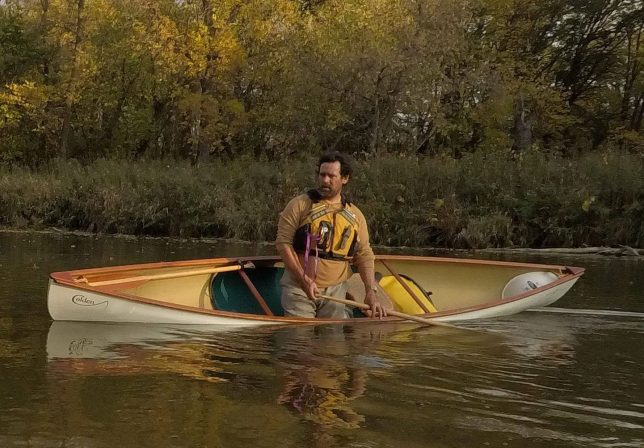
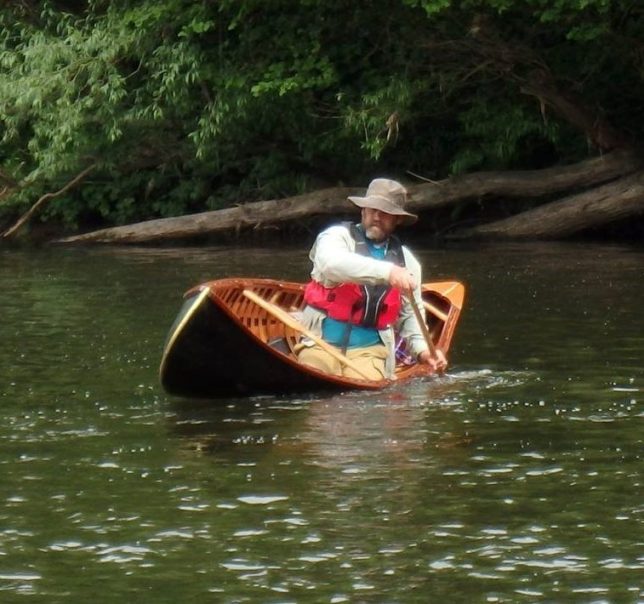 The need to have good access to the water, allowing for a vertical paddle shaft and more efficient strokes, means that Canadian Style is paddled with a continuous heel. Similarly, cross strokes are not often used because canoe width; reaching across would require moving, or really long (gorilla) arms. My interpretation of Canadian Style canoeing also has a fair bit of side displacement and pivot variations (line pivots, bow or stern pivots, displaced circles, etc…) – this is not necessarily the norm.
The need to have good access to the water, allowing for a vertical paddle shaft and more efficient strokes, means that Canadian Style is paddled with a continuous heel. Similarly, cross strokes are not often used because canoe width; reaching across would require moving, or really long (gorilla) arms. My interpretation of Canadian Style canoeing also has a fair bit of side displacement and pivot variations (line pivots, bow or stern pivots, displaced circles, etc…) – this is not necessarily the norm.
I have not mentioned terminology in this article, both Canadian Style and FreeStyle devotees have their own lexicon of jargon. There are a lot of similarities to the styles, but learning the terms and translating between them takes some time and practice – just like any two dialects.
On reflection: FreeStyle displays the paddler – the paddler is part of the dance. In Canadian Style the boat is the focus.
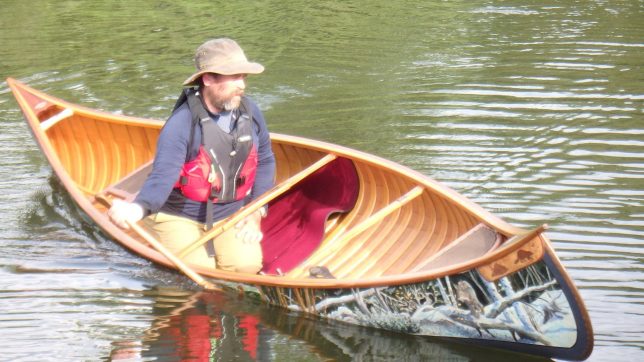
Although Daniel and Darry have differing lives and opinions they still get together at family gatherings to share experiences, learn from and support each other?
Charles